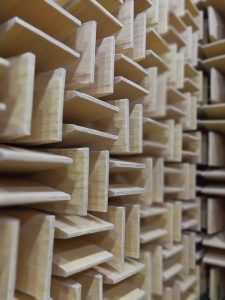There is a real lack of silence in our modern lives, and it’s not something most people really notice anymore. Think about it, when was the last time you can say that you truly had a prolonged period of quiet? A time with no music or TV, time when no cars drove past or people talking and shouting on the street outside? As soon as you start to think about it you’ll probably realise that it’s very difficult to think of an answer, especially if you live in a more urban setting. Now we have come to accept that this is the norm, the world is a busy place and doesn’t really stop and for most people this is an acceptable arrangement. But what if you need the quiet? How can you silence a world that doesn’t want to be silenced? The answer is to have some professional soundproofing installed.
 Types of soundproofing
Types of soundproofing
The idea of professional soundproofing might initially sound very grand and expensive, but it doesn’t have to be. Depending on the space you need soundproofed and the level of noise cancellation you require, there can be a variety of options open to you. The most common of these is to have ceiling or wall panels installed; these will thicken the wall surface and add noise absorption to wall or ceiling (or both). This is what is commonly used in recording studios and sound booths to help ensure there is no interference from outside noise to contaminate any recordings. However these are bulky and fairly expensive to install and require a room that you don’t object to having the walls completely covered, decorating is definitely not a priority.
If total soundproofing is not essential and simply noise level control is what you are seeking then there is a totally different kind of solution that you might want to consider. You can install ceiling mounted shapes made of specially designed, noise-absorbing foam that will interrupt the acoustic flow of the room and make a remarkable difference in the ambient noise of a room such as a call centre of busy office. These devices start with the simple baffle; these are suspended on short wires from the ceiling and have their entire surface area exposed to intercept and absorb sound. The best thing about hanging baffles for noise control is that they are very affordable and can make a significant improvement in ambient noise pollution.
Stepping up from here is something known as a wave, and as you might imagine it is a very similar idea to a baffle, but wavy. They work in a very similar way, by having a large exposed surface area for the sound to be absorbed by and come with a few added benefits. As they are a wave formation, they have a larger surface area for their length than standard baffles do, but a real bonus is that they look very striking. When installed, the waves appear to make a very bold design statement and can make an office (or any other space) appear ultra-modern with a remarkable ceiling installation. They are functional and aesthetically pleasing whilst providing great results.
Which is for me?
If you are looking into soundproofing, then it is important to have a clear goal in mind. The types of soundproofing outlined above are the two main types, but there are other options and, depending on your requirements, there might be a different system that will work best for you. Making this decision requires expert knowledge of the product options as well as the installation process, so using a skilled and knowledgeable professional company such as SoundFix Acoustics to ensure that you get the best advice and service is essential. In a domestic setting, baffles and waves are probably impractical, but the space you need soundproofing will need to be assessed and then you can weigh up the outcome of installing the products against the cost. It is important to remember that any kind of soundproofing is going to fundamentally change the room it is installed in in some way, so you will need to consider this factor before you proceed.
Overall, there will always be a way to achieve the level of soundproofing or noise reduction you desire in whatever space you have in mind. The biggest obstacle is going to be balancing all of the factors to ensure that the decision you make is the best for your budget, space and outcome.





